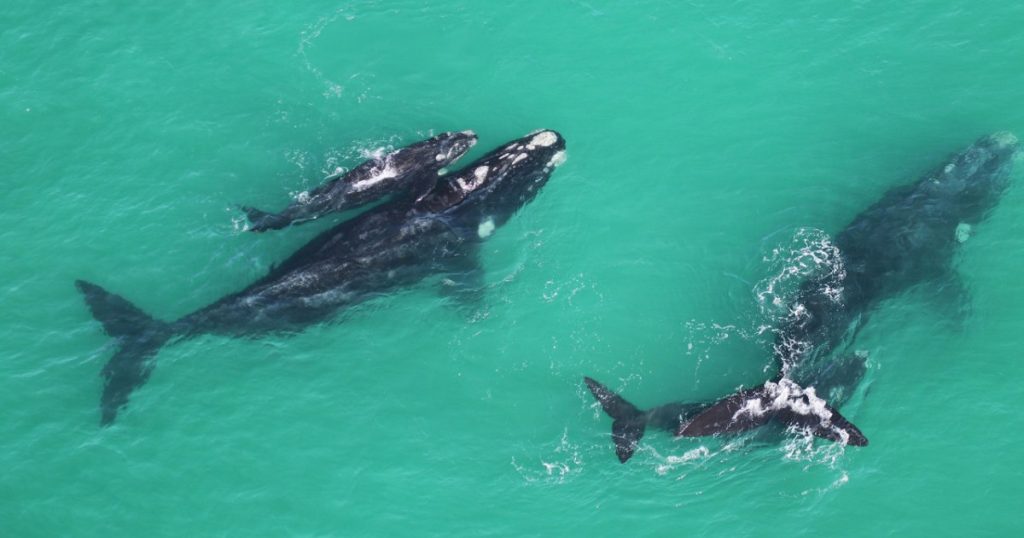Hermanus, a coastal town in South Africa, has become a haven for whale watching, a stark contrast to its past as a whaling hub. The southern right whale, once hunted to near extinction, has made a remarkable recovery, now numbering around 20,000. Els Vermeulen, head of the whale unit at the University of Pretoria’s Mammal Research Institute, emphasizes that despite this success, the whales are still vulnerable, facing new threats from climate change. Their population, though growing, is doing so at a slower pace, and their body weight has decreased significantly since the 1980s. Vermeulen’s team uses advanced tagging technology to monitor the whales, gathering crucial data about their behavior, feeding patterns, and the overall health of the marine ecosystem.
The whale tagging process is a delicate operation, requiring precision and expertise. Amy Kennedy, a seasoned whale tagger, explains the challenges of deploying tags on these massive, moving creatures, highlighting the importance of accuracy for optimal data transmission. Each tag, a significant investment, collects vital information about the whale’s movements and diving patterns, contributing to a broader understanding of their response to a changing environment. The data collected reveals that the whales are adapting their behavior, traveling further and diving deeper than previously thought, in response to shifts in their prey availability.
The Whale Unit, established by Peter Best in 1985, boasts a rich history of whale research. Best’s pioneering aerial surveys, initiated in 1969, and his meticulous photo identification work have created a comprehensive dataset spanning decades. This long-term data, combined with new technologies like satellite tracking and CTD tags, provides invaluable insights into the whales’ lives and the impacts of climate change on their population. Vermeulen, carrying on Best’s legacy, leads the annual aerial surveys, capturing vital information about whale numbers and individual identification.
The integration of cutting-edge technology has revolutionized whale research. CTD tags, which measure conductivity, temperature, and depth, transform the whales into “citizen scientists,” providing crucial data about the ocean environment. This information is helping researchers like Matthew Germishuizen understand the complex relationship between climate change, sea ice conditions, and the whales’ changing feeding patterns. The whales’ preference for specific temperature and salinity ranges, especially when feeding on copepods, highlights the importance of ocean fronts, which themselves are shifting due to climate change.
The data reveals a concerning trend: the whales are now feeding more on copepods in the Antarctic Circumpolar Current, a shift driven by declining sea ice and impacting the availability of their preferred prey, Antarctic krill. This dietary change has likely contributed to their reduced body weight and slower breeding rate. The whales, as sentinel species, are providing critical insights into the broader effects of climate change on the marine ecosystem. Their struggles reflect the challenges faced by other species in the face of a rapidly changing environment.
Looking ahead, technology holds immense promise for whale conservation. Vermeulen envisions a future where AI can identify individual whales from satellite images and create a comprehensive digital catalogue, accessible to researchers and citizen scientists alike. This collaborative approach, utilizing photos uploaded by tourists and whale watchers, has the potential to greatly expand our understanding of whale behavior and distribution, empowering individuals to contribute to conservation efforts. The success of the Happy Whale app for humpback whales serves as a compelling example of the potential of citizen science to drive impactful research.

